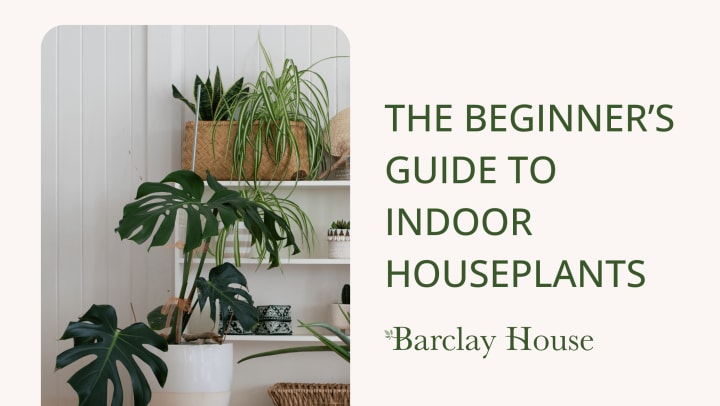There’s something about a bit of green—real green—in the home that perks everything and everyone up.
And anyone can keep a plant alive. Even those who have managed to kill a cactus (very difficult) can learn to do this. It’s a simple matter of following three basic rules of green thumb.
1. Consider Where Your Window Is
Yes, it would be lovely if you could pick out the prettiest plant in the greenhouse and plop it in your window, but that’s not the way things work. In the northern hemisphere, south-facing windows get the most light and are perfect for sun-loving plants like jade, aloe, lithops and string of pearls.
But the exciting thing is that south-facing window provide enough light to grow many herbs, as well. So you can plant basil and mint and you’ll always have the ingredients on hand for a caprese salad served with a mojito. You can even grow a Meyer lemon tree in a south-facing window.
If you don’t have a south-facing window, you still have options. Spider plants, Boston ferns and fiddle leaf figs grow well in east-facing windows. Snake plants, peace lilies and moth orchids grow well in north-facing windows. And geraniums, aloe vera and hibiscus do well in the bright afternoon sun of west-facing windows.
2. Water Just the Right Amount
Just like with parenting, consistency is the key here. You can’t lavish your plant with attention one day, then ignore it for a month. Get on a schedule and stick to it.
The majority of houseplants should be watered when they are dry at a depth of two inches deep. Generally, that equates to once a week. A general rule is to water the equivalent of about ¼ to 1/3 of the volume of the pot holding the plant.
With that said, there are definitely variations among different types of plants. Those who have failed at houseplants before should start out slow by choosing only one type of plant. Learn its requirements, either at your local greenhouse or by doing research online. Then stick to the plan.
3. Don’t Forget the Fertilizer
If you wonder why your Meyer lemon tree has no lemons or why your flowering plant has no flowers, ask yourself when you last fertilized the plant. Because, again, just like kids, your plants need to be fed. Water is not enough.
An all-purpose houseplant fertilizer should do the trick but remember to only fertilize when your plant is actively growing in spring and summer. Then take a look at the manufacturer’s suggestion as to how often to fertilize.
Keep in mind, though, that less is more when it comes to fertilizing. Your plant needs some, yes, but do not overdo it. In fact, some experts recommend fertilizing at half the suggested strength on the label.
With a little love and attention, your houseplants will thrive. And your home will be a green oasis of calm.
At Barclay House, you’ll find that our beautifully landscaped grounds offer abundant opportunity for enjoying nature. We’d love to give you a tour—either virtually or in person. Contact us to learn more.








